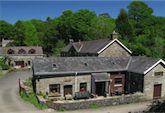Pottery and ceramics have been part of human culture for thousands of years. From cavemen to spacemen, storage jars to space shuttle tiles. The story of Welsh pottery and porcelain is told in the Joseph Gallery of the National Museum of Wales which is home to one of the world’s most important collections of ceramics. From ancient Egyptian pottery over five thousand years old to new objects produced by contemporary potters, the collection is impressive. But what exactly is pottery?
In simple terms, a pot is a container made from clay. Clay is a natural material that when modeled, dried and fired, usually with a glaze or finish, into a vessel or decorative object becomes what we call pottery. The word derives from the Old English potian, “to push”.
But what is the difference between pottery and clay? Clay has chemically-bonded water in it. This means that a dried clay object will disintegrate when placed in water. Once it is fired (heated up) to between 350â°C and 800â°C, the clay is converted to ceramic and will never dissolve again. A permanent chemical change has taken place.
The Jospeh Gallery has a particular emphasis on Welsh pottery and porcelain, European porcelain and contemporary ceramics. There is a comprehensive display of pottery made in Llanelli and Swansea between 1764 and 1922, as well as the striking porcelain made at Nantgarw and Swansea between 1813 and 1826. The collection was mainly gifted between the years of 1917 and 1929 by the Breconshire banker Wilfred de Winton who gave the museum several thousand objects that he had collected from all the main eighteenth century European potteries including English, Dutch and German porcelain as well as works by Pablo Picasso. In 1992, the museum added to the collection by buying some of Sir Leslie Jospeh’s collection at Sotheby’s in London. The Welsh Ceramics Gallery, at National Museum Cardiff, is named the Joseph Gallery in memory of Sir Leslie.
South Wales also has some working pottery workshops which are open to tourists such as Ewenny Pottery near Bridgend.

